
PortsideCafe



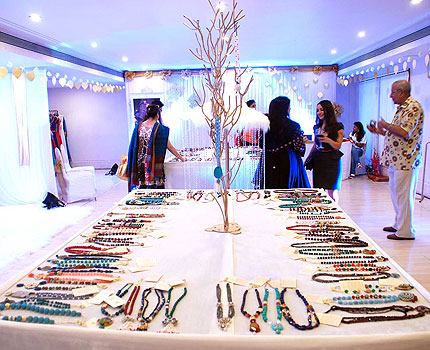 Designer Nisha Merchant proudly introduced daughter Nishita Merchant’s first ever accessory line. Nishita’s reflection for jewellery aesthetics comes from her vision of each neck piece as though they are telling a story.
Designer Nisha Merchant proudly introduced daughter Nishita Merchant’s first ever accessory line. Nishita’s reflection for jewellery aesthetics comes from her vision of each neck piece as though they are telling a story.

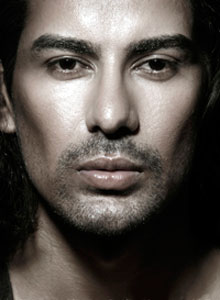 They say determination overbears destiny, specially if that determination was tamed by Kabir Singh. Gritty being mellow and benign, this lad from Faridabad grew up as a street urchin, playing cricket in the narrow lanes of this city. He reminisces, “At one point of time, I wanted to be a cricketer – another Sachin Tendulkar. But as you grow up, preferences change and you explore the other sides of you. And, it was at that moment, I got bugged to be a model.”
They say determination overbears destiny, specially if that determination was tamed by Kabir Singh. Gritty being mellow and benign, this lad from Faridabad grew up as a street urchin, playing cricket in the narrow lanes of this city. He reminisces, “At one point of time, I wanted to be a cricketer – another Sachin Tendulkar. But as you grow up, preferences change and you explore the other sides of you. And, it was at that moment, I got bugged to be a model.”
The journey to modeling has not been easy for Kabir. Huddled by destiny but urged by those steadfast dreamy eyes, he salvaged the success to his shores by working in a call centre for 1 month 17 days( he emphasizes the figure) for a sum of twelve thousand rupees. Kabir reminds, “ Due to financial restrains, I could never afford a good portfolio. Even during my graduation at College of Vocation Studies, Delhi, I wasn’t sure whether I would be a professional model or not. So I had to work hard to earn to get my portfolio done for which I had to bear the castigation of my family for spending this much amount on some useless pursuit.” Despite the international looks and toned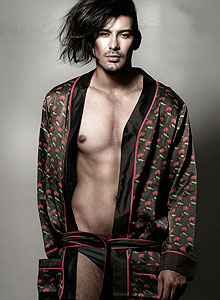 built (according to Kabir, his forte and of course it is), he didn’t get a single shoot till 8 months. But determination and patience( the traits he worships) paid off and he emerged to be amongst top 10 in Mr. India World 2008. And it was the cusp where the parabola shot up and Rahul Dutta selected him for a brand called Indira.
built (according to Kabir, his forte and of course it is), he didn’t get a single shoot till 8 months. But determination and patience( the traits he worships) paid off and he emerged to be amongst top 10 in Mr. India World 2008. And it was the cusp where the parabola shot up and Rahul Dutta selected him for a brand called Indira.
By now, the mist had cleared off from the heights and Kabir earned the doses of recognition and admiration from the likes of Lubhna Adams and Rohit Bal. He says,” I started in 2008 and since then I have always worked on my terms. The people like Lubhna and Gudda helped me a lot. I owe whatever I have to them.” Such is altruistically confident Kabir, who loves the fact( In fact, we love it too) that he is an IMG Lakme Pool top 7 models.
Having had sashayed for every designer and shot for the likes of Debenhams, Yamaha, Lee and Revlon, Kabir is eyeing Milan with that same determination with which he had knocked the doors of the Indian fashion world.
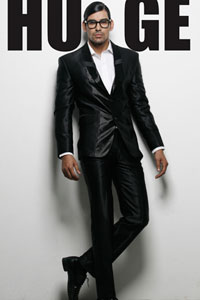 PEEK-A-BOO
PEEK-A-BOO
FAVORITE FOOD: Ghar Ka Khana
FAVORITE PERFUME: Gucci
FAVORITE DESIGNER: Rohit Bal. Besides being highly aesthetic, he is very good at heart.
FAVORITE HOLIDAY DESTINATION: I am a beach person. So it must be Goa and Bangkok.
THING YOU ARE ADDICTED TO: Love of my family.
YOU ARE SACRED OF: Disfame
MUSIC YOU LOVE TO LISTEN: I love bollywood numbers.

Aspiring models converged in the capital to participate in this season’s national model auditions for Wills Lifestyle India Fashion Week (WIFW) Spring/Summer 2011. Hosted by Fashion Design Council of India in association with venue partner F Bar & Lounge, The Ashok, these auditions have become a venerable launch pad for some of the freshest faces in fashion and have successfully introduced the likes of Neha Kapur, Monikangana Dutta and Liza Hayden to the fashion fraternity.
The jury this season comprises some of the biggest and well respected names in the industry and includes Anjana Bhargav, Asha Kochhar, Gaurav Gupta, Harmeet Bajaj, Namrata Joshipura, Poonam Bhagat and Tania Lefebvre.
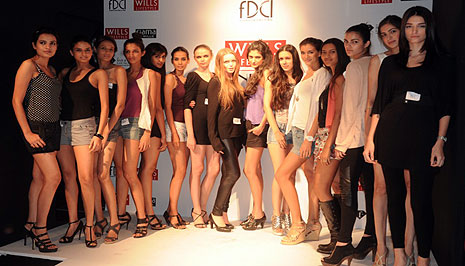
After undergoing some grueling selection rounds wherein the participants will be rated on poise, confidence and attitude among other parameters, new models were selected. The competitive and multi layered nature of the process ensures that only the best and the bravest are eventually shortlisted for this opportunity of a lifetime.
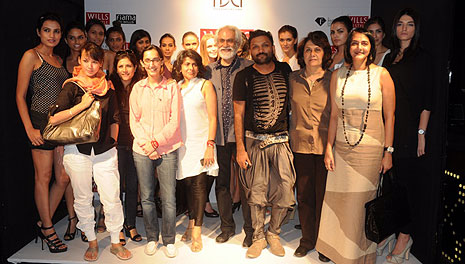
Sunil Sethi, President, FDCI said, “Modeling at the WIFW is a ticket to greatness and FDCI is committed towards encouraging new talent that can subsequently represent the best impulses of Indian fashion before the world. The models that we have guided and nurtured in the past continue to do us proud through their participation in international and national fashion events. Today FDCI humbly considers it a responsibility to continue to identify and polish such gems of talent. ”

The flapper dress keeps coming back in fashion over and over again. Find out how the 1920s and 2010 share a lot in common.
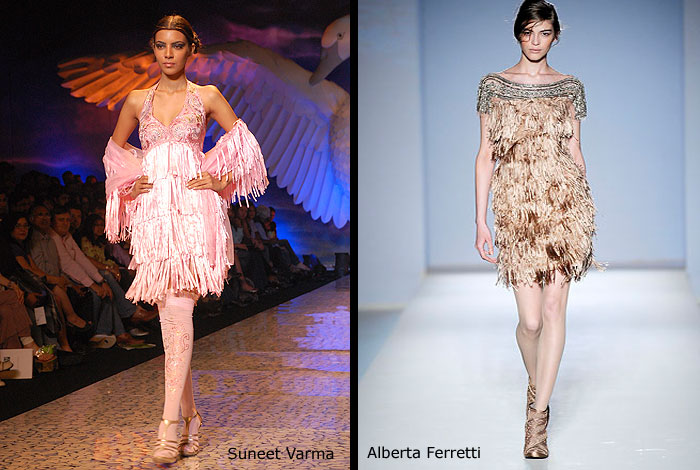
Fashion always reflected everything that happened in society. Up until the 1920s, fashion was a rich woman’s prerogative. The ‘roaring twenties’ are synonymous with the flapper dress and since the flapper dress was easy to construct, a lot of people were successful in making it at home. While pop culture movies always flaunted short flapper dresses, hemlines were short only between 1926 and 1928 where the flapper fashion peaked to reveal knees. For most part of the decade dresses and coat lengths were calf length.
THE MANNISH SILHOUETTE TREND
The First World War I (1914-1918) had started and women had to take up a lot of male chores and roles. The resultant fashion was a boyish touch to silhouettes. The clothes were shapeless and loose and the bust was flattened. The hair was short and narrow hips were preferred to the more wholesome curves. In fact big busted girls had to bandage their breasts for the flat silhouette. There were bras available in the market that could be laced at both sides and pulled to flatten the chest. The more boyish a woman looked, the more fashionable she was.
THE ACCESSORIES
Since the flapper trend demanded bare arms, the legs also had to undergo a makeover. Where young girls only wore woollen stockings in black to cover their legs, their 1920s counterparts gave the impression of nude with their beige stockings. Stockings in nude and pastels were a rage. This was also a time where Coco Chanel came into the picture with comfortable clothes—a break from the constricting corsets—and soft fabrics and fluid silhouettes. Other than stockings the big accessory of the 1920s was the Cloche hat. To match the extremely short hair of the 20s the Cloche hat was a skull-hugging hat that only fit cropped hair. It fit really low on the face as it was considered unfashionable expose your forehead then.
COATS AND SHOES
Throughout the 20s the hemlines varied but the one thing that remained constant was the wrap over coat in all kinds of lengths. It was fastened on one side with an oversized button or a huge clasp or buckle. Mary Janes with ankle straps, T-bar shoes with bows with heels over 2 inches was the shoe fetish of the era. Shoes started to evolve because they were actually visible with the now shorter hemlines.
The new breed of modernwomen ended with the Great Depression of 1929 when the traditionalist view of women and frugality replaced the more liberal flapper era. But the dress and the era still remains a very important time for fashion and epitomised the youthful, free-thinking woman.

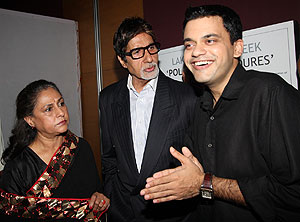 Scintillating, mesmerizing and spellbinding!!! A week that was.
Scintillating, mesmerizing and spellbinding!!! A week that was.
Back-to-back creative chronological outbursts endlessly forayed the ranges from viable to unimaginable silhouettes, colors and materials. Must say a hallucinatory experience.
It was a busy sight with international and domestic buyers rushing towards the source center after almost every show. But obviously! Not every stall was crowded, By and large the accessories got more people taking interest from shoes, bags to unusual jewelry masterpieces. This was the first time LFW had showcased a new breed of accessory designers.
The ensembles that were in demand were more on Indian sides, the seniority definitely got high-ranking based on the quality and aesthetic sense of the designers.
While a few challenged the aesthetics revoltedly the others harmoniously graced the nature’s abode. A picturesque confluence of energies in every form and every level was at sight. The grand finale by Malini Ramani topped the charts with her nomadic hues and shapes. While Manish Malhotra revolved round some basic shades of blues and reds for Indian silhouettes. A closer approach by Manish Arora on a distinct platform was an overzealous soul-winner. The denims got redefined with a Narendra Kumar’s touché de finesse.
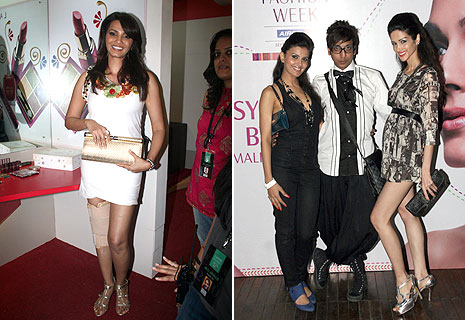
Over all there were a less no of International buyer seen at the venue. Taking account of almost every designer stall, My time was spend noticing and understanding the technical side of the garments. And frankly there has been a great improvement in terms of material innovation, surface treatments and color sense.
I found that it was more likely that Indian fashion is soon going to over shadow its other counter-parts world-over in the coming years. Lakme Fashion Week definitely acted as a launch pad to some new talents. The level technicality involved in the garments was phenomenally functional.

The other stalwarts were …Neeta Lulla throwing an array of coruscant hues from her historic incessant excursions. The others that left a refined impact were Anita Dongre’s nomadic colorful venture, Nachiket Barve connoting his theory on “The Magpie” and talented Little Shilpa, Swapnil Shinde and the master of his art Arjun Saluja.
I t was all in all an unforgettable experience. My only regret during the fashion week- I would have got a chance to try these objet d’art.
